We're an affiliate
We hope you love the products we recommend! Just so you know, we may collect a share of sales or other compensation from the links on this page at no additional cost to you. Thank you if you use our links, we really appreciate it!
If you own a Pitbull or you are planning to adopt one, this is a great place for you to learn the 10 common Pitbull health issues he might face.
The Pitbull dog is a term that is used to refer to any of the four dog breeds that form members of this family.
We have the American Pitbull Terrier, Staffordshire Bull Terrier, American Bull, and the American Staffordshire Terrier all of which have major similarities and only a few differences among them.
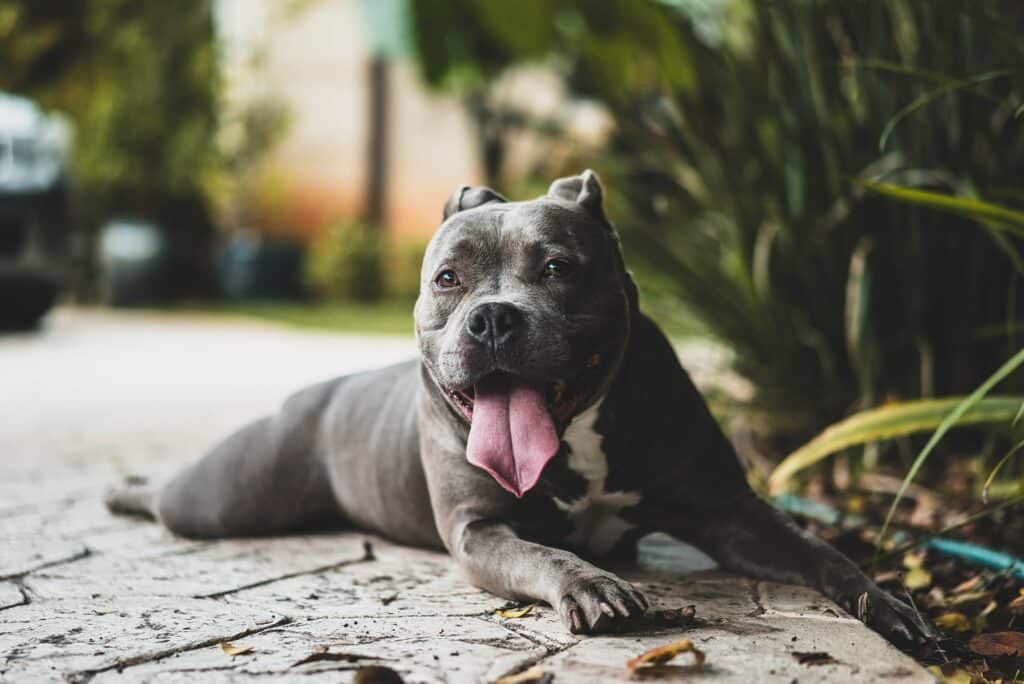
All pet parents would love their pretty furry friends to be healthy all the time.
Before deciding to adopt any dog, you need to do some research on how well you can take care of him. This includes looking at different topics such as feeding, exercises, daily pattern, how long they take to grow, and of course the common health issues they might face.
A Pitbull is that strong and smart dog who will give you all the love and companionship you need from a pet. Having prior knowledge of the types of diseases that are most likely to affect him is one way of ensuring that you take proper care of your pet.
It is always recommended to take proper action to curb the rise of any disease in your pet. In the unlikely event that your Pitbull gets ill, you need to have basic prior knowledge of how well you can handle the issue at the early stage.
If the health issue escalates further, then you can now visit the vet to have your dog examined, diagnosed, and treated.
What are these medical conditions that may affect your lovely dog? In this post, we will elaborate more on the 10 common Pitbull health problems. This comprehensive article will also highlight the various ways you can deal with those diseases.
Pitbull Quick Facts Sheet
Breed Group: Terrier
Average lifespan: 12- 14 years.
Height: 17 – 19 inches.
Weight: 30 – 90 Pounds.
Looking At the Pitbull
There are four dogs in the Pitbull family and among them, the American Pitbull Terrier is the most common.
In this article, we will be talking about the American Pitbull Terrier to refer to the entire Pitbull family. In case of special health attention that affects one member more than the others, we will then include all the relevant information.

The Pitbull dogs are descendants of bulldogs and terriers, and this opens up the Pitbull family to often include other dogs that nearly look similar to them.
Pitbulls were initially bred to produce an aggressive and strong fighting dog. For this reason, the Terriers who were known for their agility, and the Bulldogs who were known for their strength, were the top candidates for interbreeding.
Pitbulls were first bred in Britain during the age when bull-baiting was a very widespread sporting activity before it was scrapped in 1885.
The American Pitbull Terrier is recognized as a dog breed by the United Kennel Club (UKC), whereas the American Kennel Club (AKC) does not recognize it as a distinct breed.
This is mainly because of the controversies surrounding the Pitbull’s origin.
10 Common Pitbull Health Problems
Similar to other dog breeds, the Pitbull will be predisposed to suffer some medical conditions occasioned by his body formation and activity level.
This should sound an alert to every pet parent with a Pitbull to keep a keen eye and observe the most predisposed health issues that may affect their lovely furry friends.
We also have other diseases that are common to nearly all other dog breeds. Most of these are occasioned by old age in combination with a lack of proper preventive measures.
These are 10 of the most common Pitbull medical issues:
1. Pitbull Skin Problems
The Pitbull dog breed is genetically predisposed to acquire several skin disorders due to their short hair.
Lack of enough Zinc in your dog’s diet might lead him to develop a skin condition known as ‘Zinc-responsive Dermatosis’ whose signs include reddish skin, oozing fluid around the mouth, scaling, and lesions on the nose and foot, crusting and losing some hair from his body.

Other skin disorders that may affect your pitbull include itchiness, due to short hair and even skin cancer.
How To Control Skin Problems in Pitbulls
You can control your Pitbull’s skin problem by looking at the measure which can be easily handled to prevent him from acquiring any skin disorder.
Include a source of Zinc in your dog’s balanced diet to prevent him from contracting Zinc-responsive dermatosis. Zinc can be found in most animal meat including beef, chicken, turkey, etc. You can also find Zinc in other non-meat diets such as soybeans and peanuts.
Regular grooming of your Pitbull with clean soapy water to prevent them from suffering preventable allergies. Take your time to clean his ears also.
Provide your Pitbull with a suitable dog shade in your yard to prevent him from getting sunburns due to his short hair.
2. Hip Dysplasia
This is one of the most common pitbull hip problems, being a genetically predisposed condition. Hip Dysplasia causes hind leg problems which might lead to arthritis if not taken care of.
The most common sign of this problem is lameness, you will notice that your dog has some difficulty in rising most of the time. Other noticeable signs of this condition are; difficulty in climbing stairs and being unable to run properly.
This condition has widely been dealt with by hip surgery. Remember that it is always better and more efficient to treat a condition during the early stages before it reaches a full-blown point.
This calls for early detection of the problem and taking the right measure to curb the development of the disease.
How To Prevent Pitbull Hip Problems
You can prevent this disorder by supporting your pitbull’s hips with a suitable hip brace for his hind legs.
A suitable and fitting hip brace will help to relieve some pain in your pitbull and enable him to undertake normal exercises without much struggle.
You can also get some healthy hip and joint supplements to boost your dog’s bone health. We recommend this product from Jope.
This should be accompanied by a balanced diet which will give your dog the necessary nutrients and minerals to become healthy.
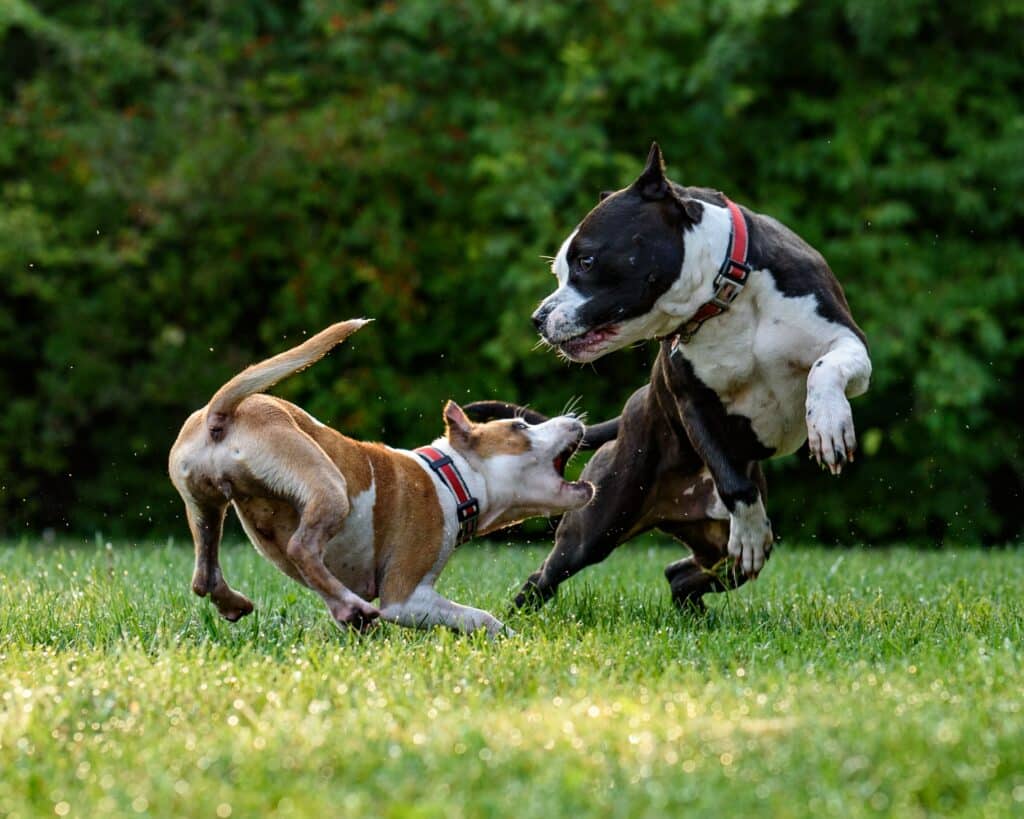
Regular exercises will also enable your Pitbull dog to maintain a manageable normal weight. An overweight dog will most certainly develop symptoms of arthritis earlier than those with normal weight.
3. Patella Luxation
Patella luxation, also known as the spinning kneecap, is one of the most common Pitbull knee problems. It is a disorder that is commonly occasioned by genetics and the structure of bones in your dog.
Pitbulls are very active dogs and you will find them engaging in energy-intensive activities throughout the day. When you combine this with their strong body, then Pitbulls are very prone to develop knee problems such as patella luxation.
Patella luxation can easily be recognized by observing how your dog runs. If he suffers from this disorder, then you will notice that he will make a sudden stop when running and start limping for a few steps.
More often, the dog will kick out the affected leg sideways to try and pop up the kneecap back to its rightful position. Once this is done, he will then get relieved and will start walking and running normally.
Arthritis medication can be used to treat patella luxation for mild disorders. If your lovely dog is severely affected, then your vet will recommend a surgical procedure to be carried out on your dog for kneecap realignment.
How To Prevent Patella Luxation in Pitbulls
Patella luxation can be prevented by including a calcium source in your dog’s balanced diet. Chicken is one of the best calcium sources for your dog. Seafood such as salmon, sardines, herring, and mackerel.
This will help in developing strong bones that can stay in place even when your dog is engaged in intense activities.
You can spice up his daily calcium intake and other minerals by providing him with adequate bone supplements with his meals.
You also need to take your dog for a regular knee check-up by your vet. This will help in the early detection of any developing signs of kneecap spinning; hence it can be handled in good time.
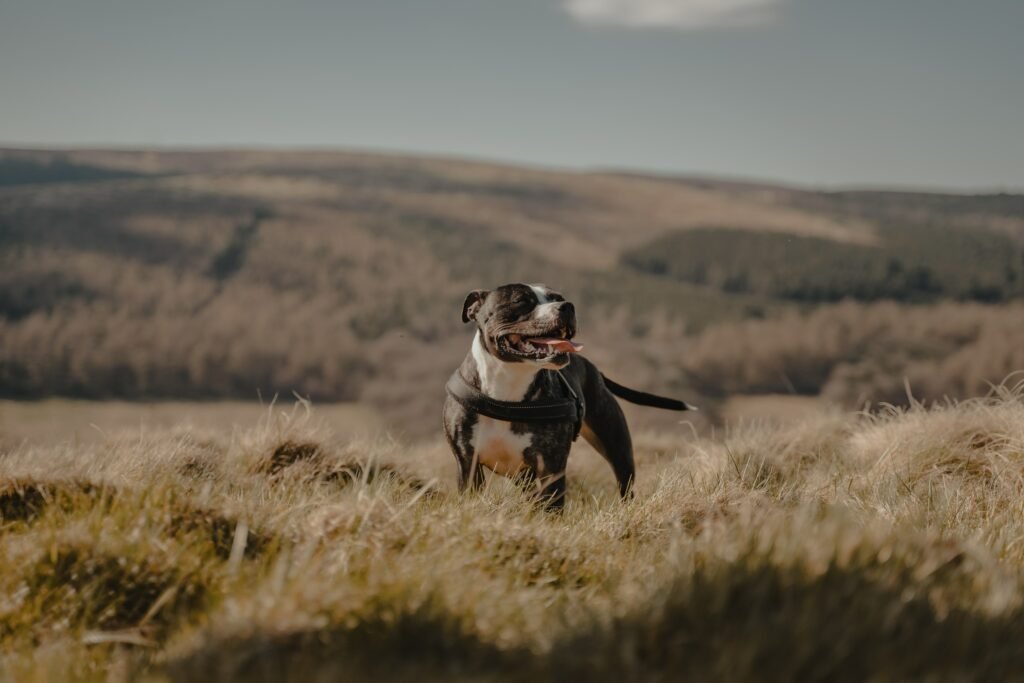
Pitbulls are very active and playful dogs, they like running around and playing with their favorite interactive dog toys all the time.
Ensure you give your dog a favorable space to exercise and play. This will help in keeping his body fit and maintaining good bone health.
4. Thyroid Diseases
Thyroid glands are located in the trachea of your dog’s neck area and they produce the thyroxine hormone.
This hormone is useful to the body because it controls the metabolism rate, and will therefore cause disorders if not produced at the required levels.
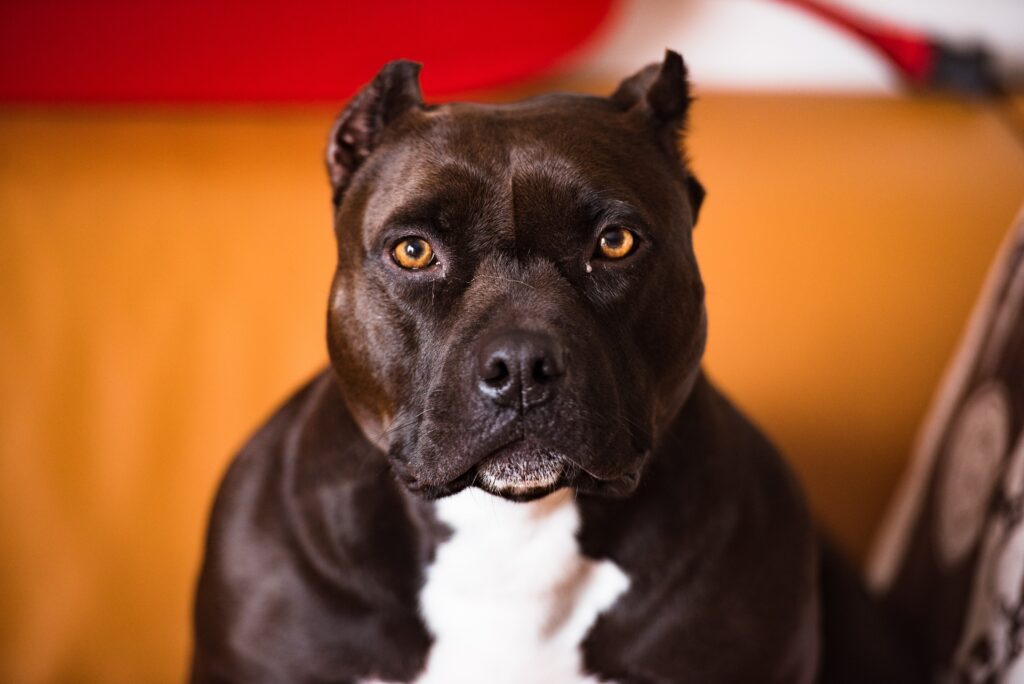
When your dog’s thyroid glands are producing less thyroxine hormone, then he will develop a condition known as hypothyroidism, which slows down the metabolism.
If the opposite happens and he now produces excess thyroid hormones, he will develop a condition known as hyperthyroidism that increases his metabolism levels.
Hypothyroidism
Hypothyroidism is very common in dogs compared to other pets. The good news is that an affected dog will always respond well to the prescribed medication.
Hypothyroidism is in most cases caused by the destruction of the thyroid glands. This destruction is more commonly caused by a disease known as lymphocytic thyroiditis, and another one called idiopathic thyroid gland atrophy.
Other minor causes of hypothyroidism include thyroid gland cancer which accounts for only about 5% of the cases.
The following are some of the most common signs and symptoms of hypothyroidism:
- Lethargy
- Sudden weight gain
- Increased shedding
- Hair loss
- Mentally dull
- Slow heart rate
- Easily gets cold
- Lack of desire to exercise
Hyperthyroidism
Hyperthyroidism in dogs is mostly occasioned by a cancer type known as thyroid carcinoma. If this disease is diagnosed as the cause of hyperthyroidism in your Pitbull, then the vet will recommend the appropriate treatment procedure.
Hyperthyroidism is very serious when it affects your dog, but the good news is that it is very rare in dogs.
The following are some of the most common signs of hyperthyroidism in dogs:
- Sudden loss in weight
- Vomiting
- Diarrhea
- Frequently thirsty
- Increased urination
- Increased appetite
- Enlarging of the thyroid glands
If you notice any signs and symptoms of a thyroid problem in your Pitbull, you need to immediately visit your vet for further diagnosis and possible treatment.
Thyroid disease in dogs is diagnosed by performing blood tests. These diseases are treatable, in some cases, your furry friend will require a lifetime prescription of thyroxine hormone for treatment.
5. Allergies in Pitbulls
Pitbulls are more susceptible to acquiring allergies as compared to other dog breeds. One of the most common causes of allergies in these dogs is their type of skin.
Pitbulls have a sleek undercoat compared to other dog breeds. This leaves them exposed to environmental irritants like dust, pollen, ash, and other dirt particles.
Continuous exposure to these irritants will make your pitbull develop allergic reactions.
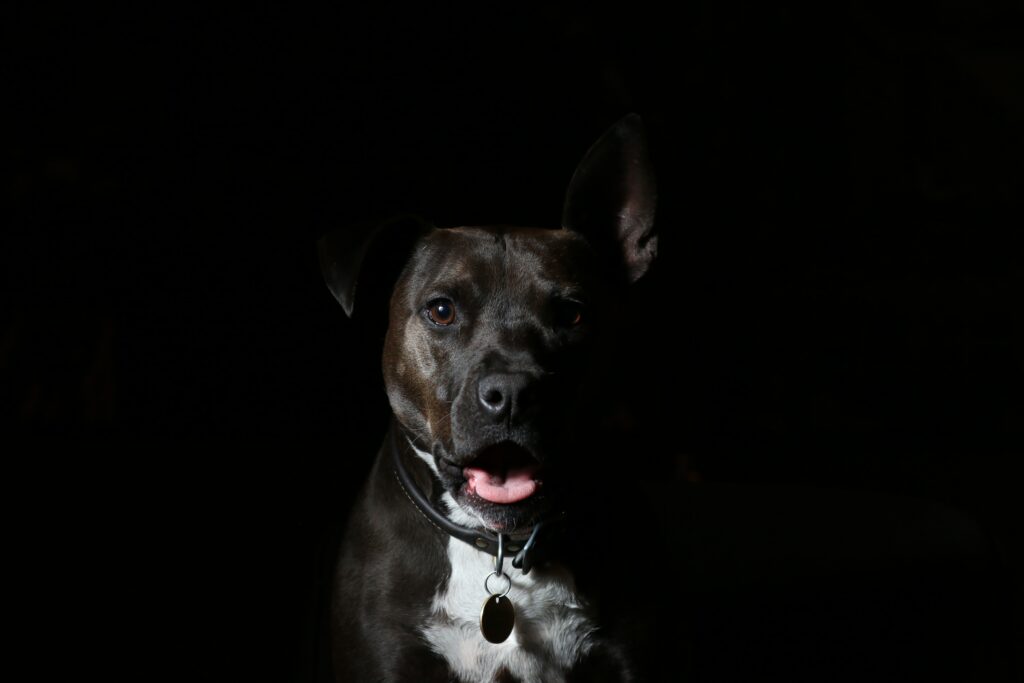
Other causes of allergies include; underlying medical conditions, parasites, grooming products, the type of food, and medication.
The most common allergies that Pitbulls suffer are;
- Skin allergies
- Food allergies
- Flea allergies
- Environmental allergies
- Seasonal allergies
The common visual indicator that your pitbull is suffering from an allergy is excessive licking of the affected part of the skin.
The signs and symptoms of allergies in Pitbulls will vary depending on the causative agent and the affected area. The following have been found to be some of the most common signs of allergies in Pitbulls:
- Hair Loss
- Ear infection
- Dry skin
- Bald Spots
- Nasal discharge
- Diarrhea
- Chewing of paws
- Watery eyes
- Vomiting
- Sneezing
If you notice any of the above symptoms in your pitbull, you need to visit the vet for further examination and diagnosis. Your vet will perform a diagnosis to determine what is ailing your dog by mostly ruling out certain disorders.
A blood test procedure is mostly administered to your dog to ascertain what causative agent your dog is allergic to.
If your dog has noticeable severe damage on his skin, then your vet will most likely refer you to a dog dermatologist to perform further diagnostic procedures.
How To Prevent Pitbull Allergies
You can prevent your lovely pitbull from developing allergic reactions to various environmental agents by ensuring that your home is always clean and tidy.

Always ensure that you use dog-safe cleaning products to groom your pitbull. There are some products that when used might occasion allergic reactions in your pitbull.
If your dog is allergic to certain food types, you can get a good replacement for that particular food that will give him similar nutritive benefits.
Always inspect your dog’s skin when bathing him. Removing all fleas from his coat with a suitable dog brush. If you notice a huge infestation of fleas and ticks, you can consult your vet for the appropriate remedy to curb the infestation.
6. Ichthyosis in Pitbulls
Ichthyosis is a fairly rare skin condition in dogs that is more common in Pitbulls than other dog breeds. Ichthyosis is caused by a genetic mutation that prevents the normal growth of the outer skin layer.
You can know if your pitbull is suffering from this condition by carefully observing his skin pattern and looking out for any abnormality.
You will notice that an affected dog will have his skin rough and covered with a greasy flake that clumps the hair. An affected dog’s skin will often show similarities to fish scales hence the name ichthyosis which means fish in Greek.
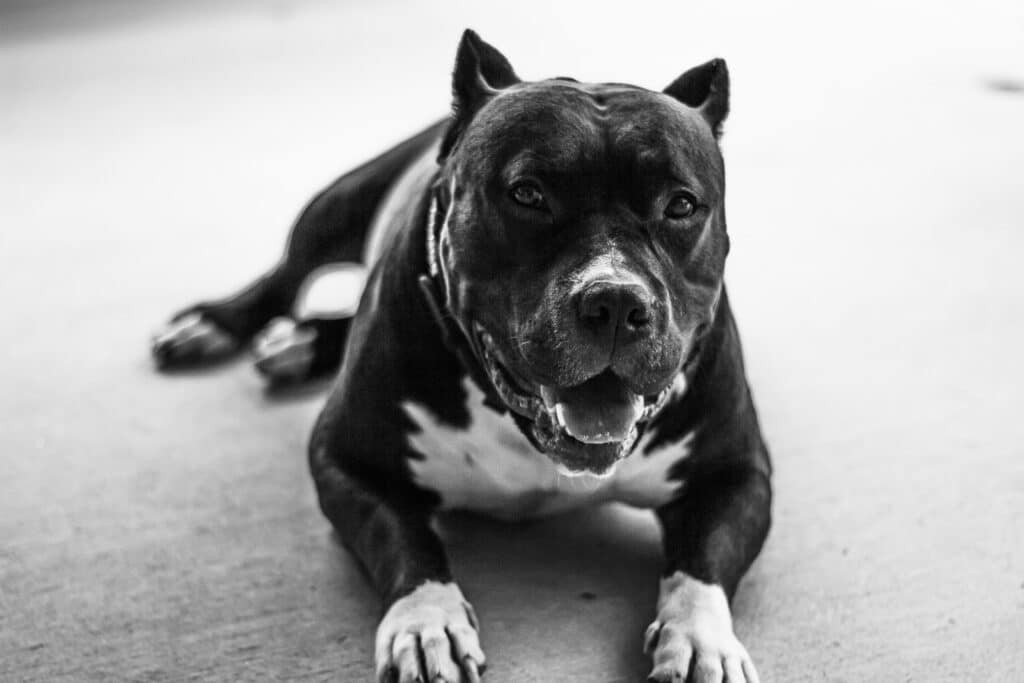
Another noticeable sign of this condition is the thickening of footpads. This can also mildly affect how your dog walks and runs.
If you suspect your dog to be having any signs of this condition, you need to contact your vet who will perform a diagnostic procedure. This condition is diagnosed by performing a skin biopsy after observation of clinical signs.
How To Prevent Ichthyosis in Pitbulls
You can prevent your pitbull from getting this condition by performing regular skin care procedures for your dog. Always ensure that your lovely pup is well-cleaned and groomed after every intense activity.
It is recommended to always use dog-safe grooming products for the best results in terms of skincare and health.
7. Cataracts
A cataract is an eye condition that leads to the cloudiness of the eyeballs. This is commonly occasioned by alterations in the water balance in the lens or changes in the lens protein.
A cloudy lens will block light from reaching the retina, hence this condition might lead to blindness if not handled early enough. Cataracts can be caused by other conditions such as diabetes and hypocalcemia.
Among the Pitbulls, The Staffordshire Terrier is more likely to develop cataracts than any other member of the breed. Cataracts in dogs can either be genetically predisposed or developed.
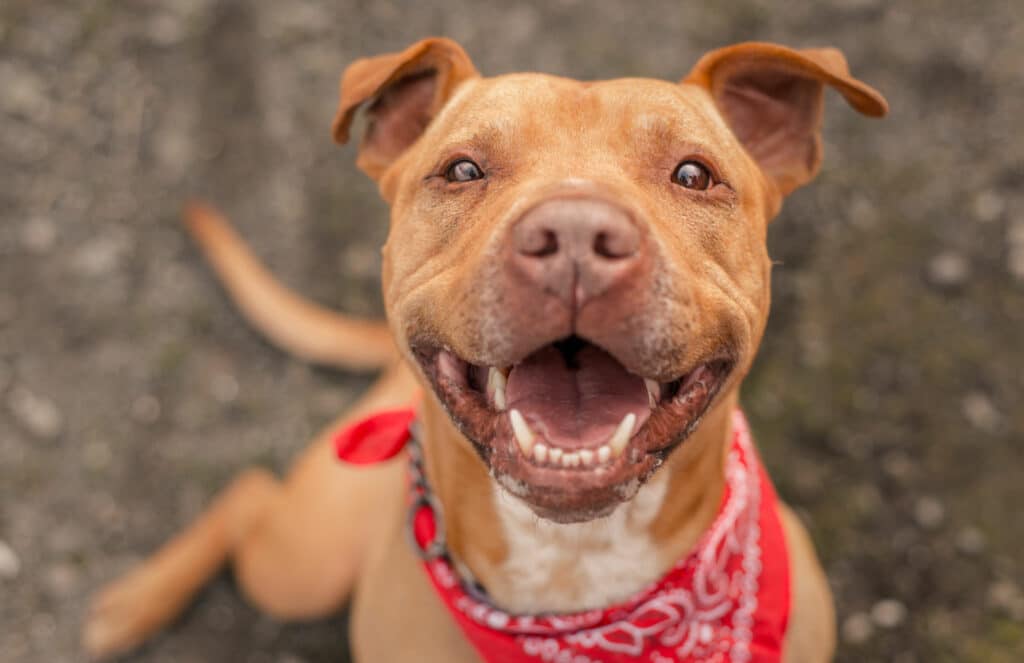
Cataracts have been confused with nuclear sclerosis. Whilst the two are related, nuclear sclerosis is the haziness that occurs because of a hardened lens. This mostly develops in your dog while he ages.
The following are some of the most common signs that your dog has cataracts:
- Eye color changes
- Pupil size and shape changes
- Watery eyes
- Visual loss signs (Your pitbull might bump into items)
- Squinting
- Clumsiness
- Jumping and climbing intolerance
- Rubbing the eyes
Untreated cataracts can ultimately develop into blindness if it is not well managed. If you notice any sign of cataracts on your dog, you need to visit your vet immediately for further examination and diagnosis. Your vet will use a magnifying glass and bright light to diagnose your dog with this condition.
How To Prevent Cataracts in Pitbulls
You can prevent your dog from getting cataracts by ensuring you protect his eyes when walking with him in risky areas.
Foods with carotenoids are best for your dog’s eye health and they can be adequately used to prevent your Pitbull from developing cataracts. Such foods include carrots, broccoli, and sweet potatoes.
You can also use foods that are rich in antioxidants to improve your Pitbull’s health and prevent cataracts. Such foods as blackberries and collard greens have enough of these minerals to perform well.
When walking with your Pitbull, you can get him protective goggles to cover his eyes along roads that lose chippings, bright sunlight, or any other hazard that might injure his eyes.
N/B: Cataracts and other eye problems in Pitbulls can cause them to sleep with open eyes as a way of reducing irritation.
8. Heart Disease
Heart disease in Pitbulls is most commonly a genetically predisposed condition. A small percentage (say 5%) of heart diseases in dogs are acquired.
The most common congenital heart diseases in dogs are the following:
1. Congestive Heart Failure; This condition will arise when your dog’s heart has trouble pumping the right amount of blood across his body.
This heart condition can also cause increased lung pressure and fluid which might lead to trouble in breathing. Congestive heart failure can attack both sides of your dog’s heart and it may take very long to be properly diagnosed.
2. Pulmonic Stenosis; This heart condition cause obstructs blood flow to the pulmonary artery from the right ventricle. In some cases, this disorder may also interfere with the normal blood flow between the lungs and the heart.
3. Canine Dilated Cardiomyopathy; This disorder will affect your Pitbull’s cardiac muscles and reduce the ability of his heart to raise enough pressure for pumping blood throughout his system. Although this condition is mostly genetic, it has also been found to be caused by nutrition-related factors.
Heart diseases in dogs will rarely show early symptoms. You will however notice the symptoms when the disease is already picking up. The following are some of the most common signs that your dog is suffering from heart disease:
- Lack of energy
- Collapsing
- Elevated breathing
- Reduced appetite
- Swollen stomach
- Sudden weight loss (in a few weeks)
- Shortness of breath
- Potbelly
- Fatigue
- Dry cough
- Frequent tiring
In most cases, your vet will detect heart disease in your pitbull during routine visits for a health check-up. This shows the importance of maintaining a regular pattern of visiting the vet.
9. Cerebellar hypoplasia
Cerebellar hypoplasia also known as; cerebellar degeneration affects your dog’s brain in the cerebellum region.
This is the region in your dog’s brain that gives him coordination and balance. This condition will often lead to a loss in the balance of your dog and poor muscle coordination.
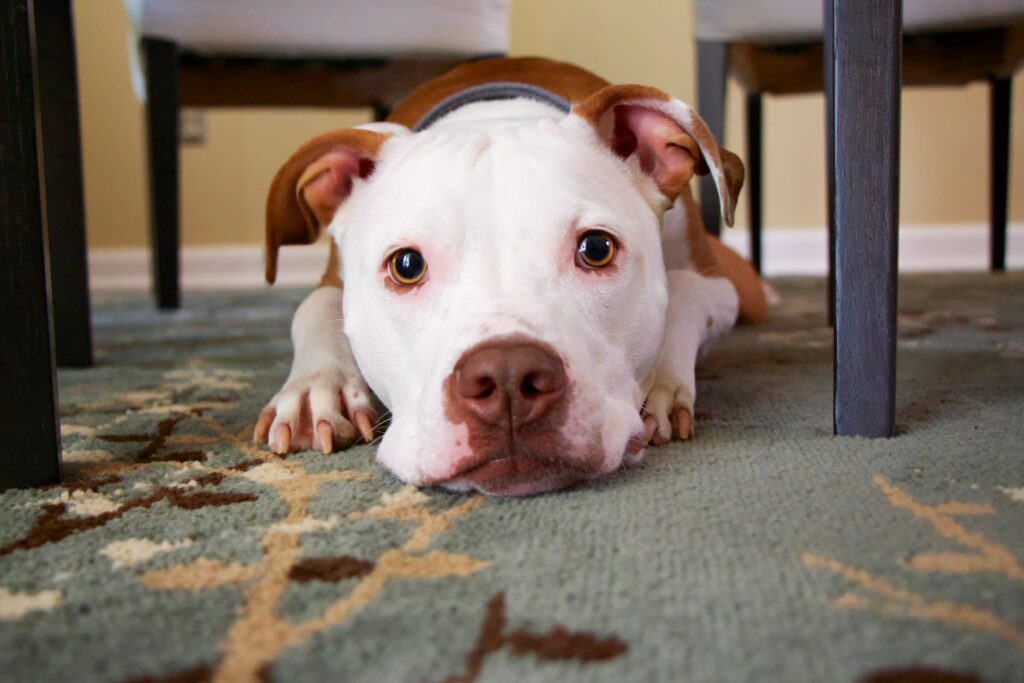
This is a genetically predisposed condition that has been found to affect 1 in every 400 Pitbull as they age.
It often starts to show up during the Pits puppyhood and the affected dog will often begin to show early symptoms when around 6 weeks to 16 weeks old.
A dog with this condition can be known by observing his movements. He will most likely lose his sense of distance and space, and walk with an uncoordinated movement, and wobbly gait. In cases of severe infections, the affected dog will be unable to move around.
Dogs that have this condition will often require additional dog wheelchair support to move around and maintain their muscle balance.
10. Pitbull Ear Problems
Ear problems are not very rare in Pits and they can easily be diagnosed by observing how the suspected dog shakes his head.
It has been estimated that around 20% of dogs have developed ear problems that commonly affect either one or both ears.

Ear infections in dogs are mostly caused by bacteria and yeast. Ear mites may also cause ear infections in puppies. Factors that favor the growth and culture of bacteria may expose your dog to contracting ear infections.
The most common ear infection for dogs to check out is the buildup of wax, and other ear discharge. Other common signs that may denote an ear infection on your pit are:
- Head shaking
- Swelling of ear canals
- Changing ear canals’ color
- Itchiness
- Odor
- Scratching or rubbing the affected ear/ears
- Discharge from the ears
If your Pit is showing any of the signs of ear disease, it is important to visit the vet immediately for further examination and diagnosis.
Ear problems in dogs are often treated by thoroughly cleaning the affected ear and administering a medicated ear cleanser.
How To Prevent Ear Infections in Pitbulls
You can prevent ear infections in Pitbulls by ensuring that you always clean them daily to remove any breeding bacteria and yeast. You can use antibacterial ear drops in case you suspect a surge of bacteria in any of his ears.
Conclusion
Prevention is better than cure. When it comes to our pet’s health, always remember that they require similar medical care that humans need too.
Now that you know these 10 common Pitbull health issues you have a headway to knowing where your lovely Pit is most likely to be affected.
We recommend having a routine of taking your Pit to the vet for a checkup. When a condition is detected early, it becomes much easier to manage than when it is detected late.
Thank you for reading through this informative article. If you have any concerns or questions, please leave a comment below and I will get back to you.
Laura is the founder of Furs'n'Paws. She is a also a pet writer and expert with more than 20 years of experience of working with dogs and cats. She developed a very strong love for animals at a young age. Her passion led her to establish a thriving pet sitting and dog walking business in Dubai. As an expert in pet training, behavior, and nutrition, Laura is committed to helping pet owners and pet lovers by offering high-quality information on a wide range of topics.


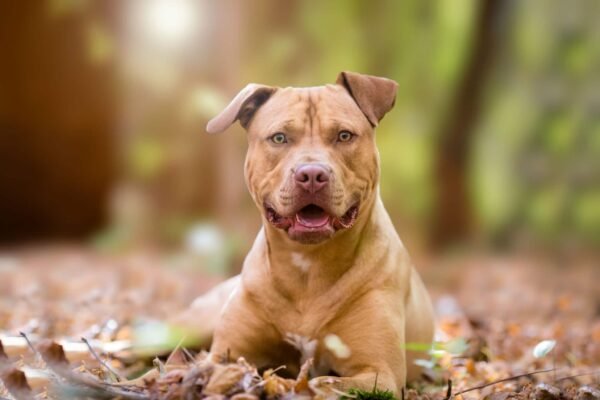
4 Responses
My Pitbull just die unexpectedly in the morning he had a big lump on his side of chest and die in my arms he was kind of stiff when I hug him never knew he had any problems
I’m very sorry for your loss! 🙁
Very good, Thank you for the detailed explanations.
Hi Valerie, thanks for your comment and glad I could help 🙂